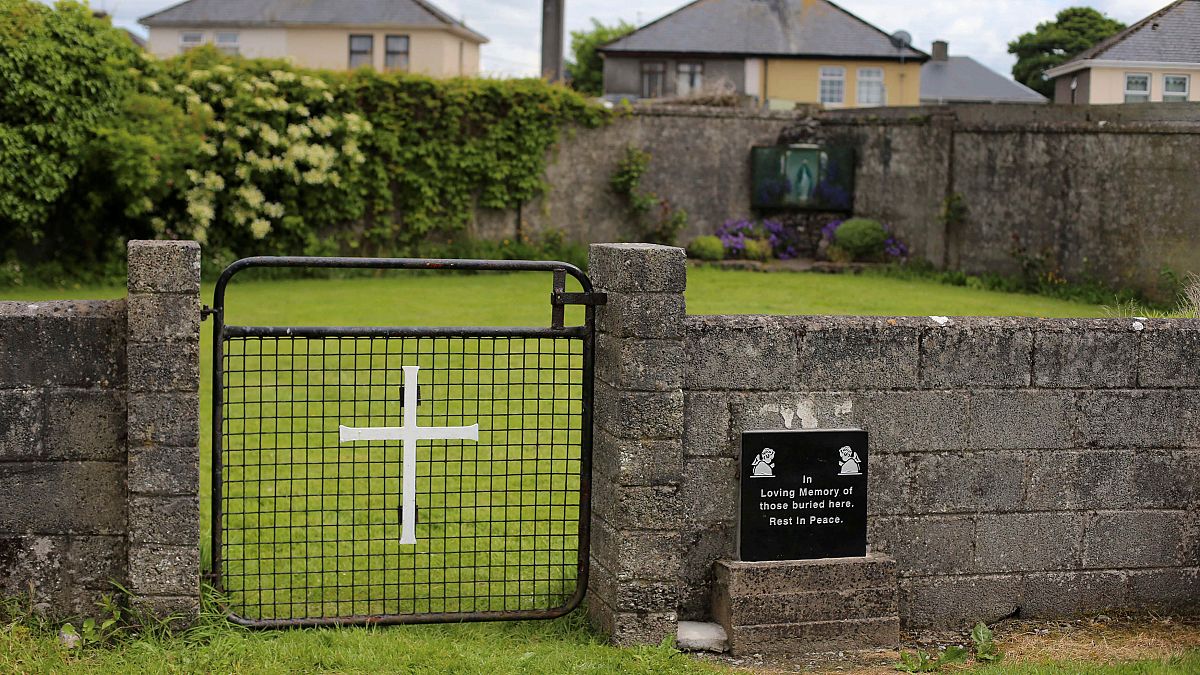The remains of hundreds of babies, ranging from new-borns to three-year-old toddlers, have been confirmed as lying in the sewers of a former church-run home for unmarried mothers in Ireland.
A significant amount of remains found in the sewers of a former church-run home for unmarried mothers in Ireland have been confirmed as human.
The remains, found in a disused sewer in the town of Tuam in western Ireland, are said to range from newborns to three-year-old toddlers.
The revelation follows decades of rumours and suspicion that hundreds of infants were buried in a mass grave at the site.
A government-ordered commission began test excavations in October 2014. The latest findings have now backed up a historian’s claim that up to 800 children may lie in the unmarked grave at the former home.
“Significant quantities of human remains have been discovered in at least 17 of the 20 underground chambers which were examined,” the commission’s report said.
The commission did not say how many babies’ remains were recovered or how many might still be buried in what are believed to be the home’s sewage and waste water system.
Mass grave of babies and children found at Tuam orphanage in Ireland https://t.co/RSssmNhTQX
— The Guardian (@guardian) 3 mars 2017
The Sisters of Bon Secours
The remains were identified by radio carbon dating. They range from 35-week-old foetuses to three-year-olds, dated from between 1925 and 1961, when the home was run by the Sisters of Bon Secours.
Why was the inquiry launched?
A local historian said there was evidence of an unmarked graveyard at the home. Records showed almost 800 children died between 1925 and 1961.
The commission is investigating 17 other church-run institutions around the country.
“A stain in Ireland’s image”
The Catholic Church in Ireland has been rocked by a series of scandals over the abuse and neglect of children.
The Church ran many of Ireland’s social services in the 20th century, including mother-and-baby homes where tens of thousands of unmarried pregnant women, including rape victims, were sent to give birth.
Unmarried mothers and their children were seen as a stain on Ireland’s image as a devout Catholic nation.
Government records show that in the 1930s, 40s and 50s, the mortality rate for “illegitimate” children was often more than five times that of those born to married parents. On average, more than one in four children born out of wedlock died.
Ireland’s Ministerfor Children and Youth Affairs, Katherine Zappone, said Friday’s news was “sad and disturbing”. She added the commission of inquiry would work with local authorities to investigate further and decide what should happen to the remains.
“This news is very disturbing and of course will touch every one’s heart.The information I have received confirms these suspicions and importantly they trace the remains specifically to the period of the home’s operation rather than to earlier times in our history such as during the famine,” Zappone told reporters.
The full statement from Minister Katherine Zappone on the finding of remains at the former Mother and Baby Home in Tuam: pic.twitter.com/awu09Dc99X
— TheJournal.ie (@thejournal_ie) 3 mars 2017
Why isn’t #Tuam being treated as a crime scene? Are we gonna use the ‘oh but they were different times’ rhetoric some more? pic.twitter.com/4EEZFlnmNE
— Andréa Farrell (@anerdabags) 3 mars 2017
What they are saying
In 2014, the Archbishop of Tuam said he was “horrified and saddened” by the historian’s discovery.
“If something happened in Tuam, it probably happened in other mother-and-baby homes around the country,” – the Archbishop of Dublin, 2014.
